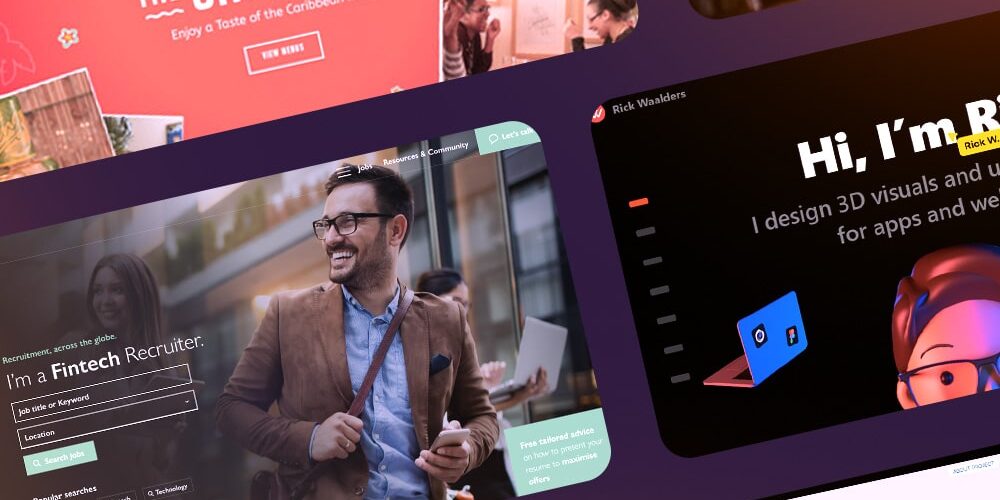If you’re involved with e-commerce or run a website or blog, you’ll know that it’s essential to attract and keep a large number of customers, users, or visitors. The larger that number is, the better.
One of the ways you can do this is by getting people to sign up for email communications from you: newsletters, discounts, promotions, special offers, or downloads, for instance. This guide will help you maximise on that subscriber list.
Read on, for advice from the (Jedi – sort of) masters…
“Use The Force”
Or, in this case, the power of persuasion. Convince people it’s:
- Worth signing up to your list for whatever you have to offer
- Worth sticking around for what you’ll have to offer in future
- Worth telling their family, friends, business associates and casual acquaintances (okay, social media “friends”) about.
The way you’ll do this is by delivering good content. Which means: well-priced, reliable, great quality merchandise; thoroughly researched and engagingly presented information, commentary, or discussions; and an agreeable experience overall for visitors to your site.
“There is Another”
Hopefully several others. Your existing subscribers know people from their real-world social and business dealings, and from their online presence in social media. You can use that fact to extend your reach.
Add Facebook, Google+, Twitter, LinkedIn and other networks’ share buttons to your email messages. Also, add a button of your own design to the message, encouraging subscribers to “Share this message with a friend”.
Your signature line at the bottom of each message (you do have one, right?) can contain more than just your claim to be “The e-commerce Jedi”, or whatever. It should also have a text-formatted call-to-action (CTA) link. Use this to encourage anyone receiving your message forwarded from a friend to subscribe to your list in their own right. Extend this policy to the email signatures of everyone in your organisation.
Go further and empower your workers in the field. Your sales staff, tech support, and customer service personnel should invite visitors to subscribe to your email list in person. This can be done the old-fashioned way, with pen and paper on a sign-up list. Or you might set up a sign-up station on a tablet computer at points of sale or reception desks.
Once you have a fair number of subscribers, you’ll find that not all of them have the same need for or reaction to what you have to say. At this point, you’ll need to target your content and differentiate between the various types of people on your list. You can create a range of subscription types to reflect this and increase the chances that somewhere someone else will find something of interest.
As time goes on, you’ll usually find that people will drop off your subscriber list. Some may lose interest and unsubscribe, while others get lost in the digital ether as they change jobs or move to different email providers.
To allow for this, you should provide an opt-in mechanism. Draft an appealing message and send it out periodically to everyone on your list. Give them the option to continue receiving emails from you or to cancel their subscription. Remove people from your list who don’t respond either way.
And remember to complete the opt-in process by sending a follow-up message/link for the subscriber to respond to, confirming their willingness to sign up (whilst simultaneously verifying their email address, of course).
“Unlearn”
Be prepared to do some outside-the-box thinking. What looks like the obvious choice may not be the best one.
For starters, there’s a quantity vs. quality issue at work here. Having millions of subscribers may be a big boost to your ego (and something to brag about on your blog and in social media). But it’s meaningless if none of those contacts translate into revenue, good will, or sales.
Better to have a few loyal, paying customers than a busload of window shoppers.
So don’t panic when you see people opting out of your list – unless they’re doing so in droves, in which case there may be a problem with what you’re sending out to them. Those that stay could be the real value clients – the ones who sustain your business and can help take it to the next level.
It’s okay to use your subscribers in this way, too. Call on them for help. Ask for feedback and referrals to their contact networks from time to time.
The rush for subscribers need not be a cutthroat process, either. There may be dozens of individuals or organisations engaged in activities similar to yours; not all of them need to be “the competition”. You can collaborate with some. Stage an event (like a webinar or an eBook launch) with a partner, and ask them to promote your subscriber option to their user base. Do the same for theirs in turn. And arrange to exchange prospects once the event is over.
Be open to change. If something isn’t working for you, ditch it, and try something else. If your subscriber list is linked to a website or blog, a poor response to it may be due to an online experience on your site that could be improved by slimming down your webpages so they load faster in the user’s browser for instance. Where possible, do test runs (so-called “split testing”) to gauge visitor responses to alternative methods of presentation.
Don’t be afraid to use multimedia elements, either. An email link to a podcast or an embedded YouTube clip demonstrating your product or service could help enliven the dialogue with your subscribers.
“Do…”
Make use of all aspects of your online presence.
Create special offers on your website (eBooks, free software demos, etc.) and give visitors access to them, once they’ve entered their email address in your online form. Stage contests or give-aways (prizes made by you, or directly related to what you do), with an email address field on the entry form. Standard opt-in/follow-up procedures should apply, of course.
Start a promotional drive on Twitter to publicise an online resource you’ve created. Have the link point your followers to a page where they’ll need to give their email address to gain access to the resource.
Use the “Updates” and “About” sections of your Google+ page to provide information about your latest activities and special offers. And use the tools provided there to generate email sign-up forms.
If you have a Facebook Business Page, put a CTA (call-to-action) button at the top to link to a landing page on your website, where visitors can enter their email address to gain access to your services or products. Put some social media share buttons on that webpage as well. You can use a similar strategy with your Company Page on LinkedIn or Pinterest.
Don’t forget YouTube. If you’ve uploaded some promotional videos or demos, put links to your site content in the attached descriptions. And if you didn’t do so when you were shooting the film, edit to include relevant web addresses and calls-to-action within the video itself.
“or Do Not…”
Ever rely on your Google (SEO) rankings to boost your income. Implementing Search Engine Optimisation is tricky at best. And with Google constantly changing its ranking criteria and algorithms, it can be downright dangerous. There are better ways to promote what you do.
Pop-up windows can be dangerous, too. Typically, these might appear on a webpage if a visitor stays on it for a set period (10 seconds is common), and not so gently encourage them to provide their email address to gain access to some usually not so great resource that they probably wouldn’t have wanted anyway.
This approach alone can turn a mild-mannered potential repeat visitor and eventual subscriber to your mailing list into an irate customer, storming off in a huff. If the pop-up windows you’ve designed obliterate the visitor’s mobile or tablet screen – or freeze it entirely – you’ll have even bigger problems.
“There is No Try”
Not with automation. And there are several tools that will let you “set it, and forget it”, as you’re managing your email campaign.
For bloggers, set up on your own hosted domain with a WordPress blog, and you’ll have access to all the templates, online forms, plugins, site counters, and analytics tools they provide. For instance, there’s a plugin that redirects any comments made by visitors to a “Thank You!” page, where they can be told about your email list and other services you have to offer.
There are third-party options, too. Developer Neil Patel’s HelloBar tool allows you to set up a site header with a custom message and CTA button to link visitors to an email sign-up and landing page elsewhere. And the What Would Seth Godin Do (WWSGD) plugin can use browser cookies to put customised messages at the top of your webpages based on the number of times a user has visited your site, or the sites they’ve recently visited.
The AWeber service provides hosting for your subscriber list, with the incentive of a free eBook once they sign up. There are tools to monitor subscriber statistics and for designing your opt-in forms.
StumbleUpon’s Paid Discovery is an advertising service which you can sign up to for a moderate fee to promote your website or blog. You can monitor the success or otherwise of your campaign with tools like Google Analytics, or use the Crazy Egg service to discover which parts of your site are getting the most clicks. And if you don’t have too much money to spend on advertising, you could use a free credit on Google AdWords to help generate some heat.
“These Aren’t the Droids You’re Looking For”
That power to persuade again. But there are ways to influence people that don’t follow the conventional path. Use your imagination.
You can go low-tech. Use real-world events like conferences and seminars to tell people you meet about your email subscription service. Carry a clipboard or not so low-tech tablet with you to get sign-ups on site. And don’t forget to follow up on any subscriptions you get as part of your opt-in policy.
You can reach out to others. If you blog, then do guest posts for individuals or organisations in your area of interest. Give them the best material you can produce. Use that opportunity to mention your subscriber list (a link in your “About the Author” bio is the usual tactic).
Or you can go cutting-edge. Put a Quick Response (QR) code into the blurb for your subscriber list, so tech-savvy mobile users can just scan the code graphic with their smartphone and sign up for your emails instantaneously.
“I AM Your Father”
Sorry. Just kidding on that one.
No dark secrets here. Just good, solid marketing advice. Hope you’ve found it useful.
THE word in professional, persuasive, digital writing. Specialists in writing, tweeting and social sharing for businesses across the globe.
Get more leads, make more sales, grow your brand faster.






